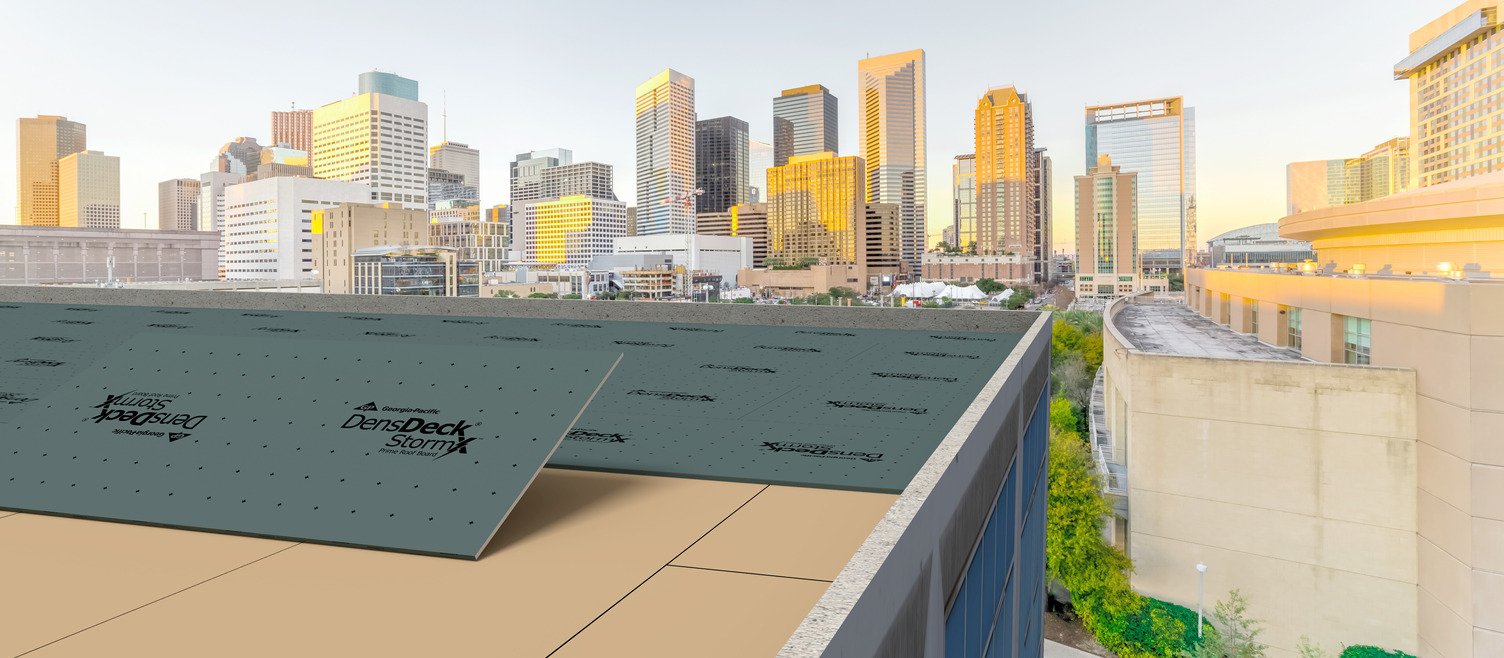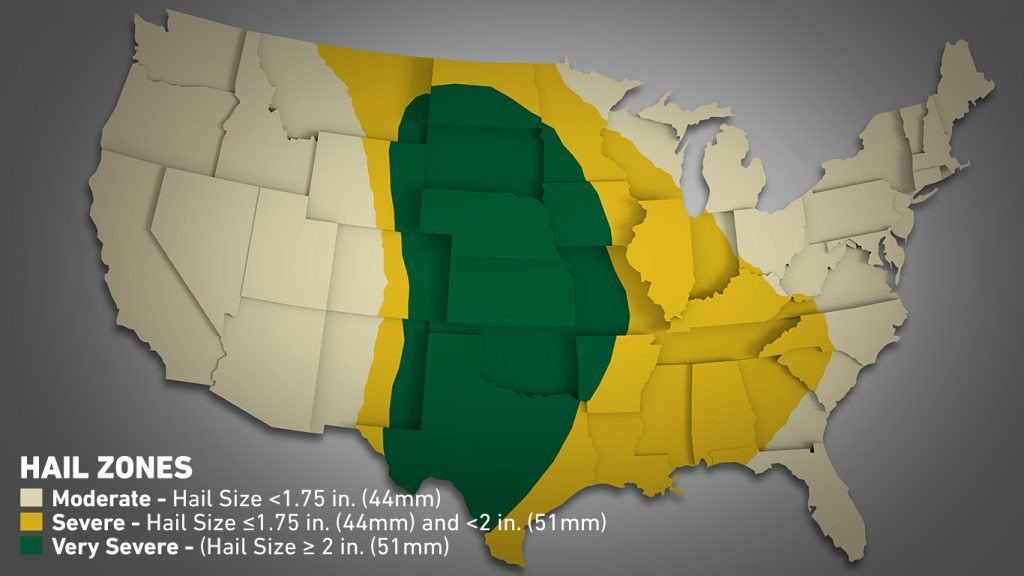Reduce Expensive Hail Damage with the Right Roof Assembly

From monster hurricanes to wildfires, severe weather threats have increased in frequency and magnitude in recent years. Among those causing the costliest damage is hail.
Though hailstorms are challenging to measure, insurers have been watching the increasing impact of hailstorms – particularly severe hail and very severe hail – on insurance claims. Generally, hailstorms annually account for 70% of insured losses due to severe convective storms amounting to $8 billion to $10 billion in damage. In 2017, a single hailstorm caused $2.3 billion in damage in the Denver area – the state’s costliest natural disaster on record. The same year, $2.5 billion in damage was caused by a Minneapolis-area hailstorm.
Hailstorm costs are escalating for a number of reasons, and insurers are taking steps to keep those costs from climbing further. For commercial buildings, this includes new requirements for designing roofing systems that will resist damage, including from very severe hail (VSH). By choosing the right materials for commercial roofs, builders can improve the strength of their buildings and their reputations.
Why Are Hailstorms So Costly?
The primary reason hailstorm costs are escalating is simple: cities are growing. Bryan Wood, a meteorologist and operations analyst for insurance company Assurant, explained in the Washington Post that many areas of the country that used to be farmland have been redeveloped into urban areas. He cites hail events that were particularly damaging over the last 10 years that occurred in areas like Phoenix, Denver, and Minneapolis, which all expanded during that time.
While a significant amount of hail-related claims come from residential property damage, commercial buildings have been heavily impacted by VSH events in recent years. The Colorado Mills shopping mall was a major casualty of Denver’s 2017 storm, sustaining roof damage, broken windows, and flooding that impacted 1.1 million square feet of retail space. The cost to repair the building’s 13-year-old roof was not disclosed, however, news reports indicate significant costs beyond building damage, including loss of tax revenue for the City of Lakewood, and lawsuits filed by some retailers for loss of business.
New Requirements for Very Severe Hail
With hail-related losses climbing, commercial property insurer FM Global is buckling down on construction requirements to protect more buildings from damage. The agency recently updated its Loss Prevention Data Sheet 1-34 – Hail Damage to create a new standard of “Very Severe Hail,” and indicates a large area of the United States where the new conditions will need to be met.
Under the new requirements, FM Approvals identifies three hail classifications:
| Classification | Diameter | Comparison |
|---|---|---|
| Moderate Hail | Less than 1.75 inches | Golf Ball |
| Severe Hail | 1.75 inches to 2 inches | Egg or Cue Ball |
| Very Severe Hail | Larger than 2 inches | Tennis Ball size or larger |
The agency introduced Very Severe Hail as a classification in 2014 with vulnerable areas encompassing Oklahoma, Kansas, and a small section of northern Texas. Today, the VSH zone includes most of the Great Plains and portions of neighboring states as shown in the map below. In the VSH region, FM Global recommends single-ply and polymer-modified bitumen membrane roof systems achieve a VSH rating. Under the new guidelines, this calls for materials that have passed much more stringent testing than previous iterations. Researchers perform the tests by propelling 2-inch ice balls at sample materials to measure:
- Impact resistance of the unweathered roof membrane
- Impact resistance of the roof membrane after undergoing artificial weathering
- Evaluation of damage to the underlying substrate.

How Coverboards Can Improve Hail Resistance
While FM Approvals focuses on identifying VSH-approved roof assemblies as a whole, the third testing measurement shines a spotlight on the importance of individual components to achieve this goal. Specifically regarding “damage to the underlying substrate,” cover boards are essential component of roof assemblies in VSH-vulnerable areas. These panel materials can give strength, dimensional stability, and even fire resistance to the roof. In areas with a threat of severe hail, they can also serve as an extra line of defense against costly building damage.
“Cover boards make roof systems perform better in many ways,” says Mikael Kuronen, Director of Product Management at Georgia Pacific. “The role of a cover board in a roof system designed for very severe hail is critical. They can provide the essential strength and durability to protect the membrane from puncture and the insulation from impact damage.”
Of the numerous roof assemblies that currently meet the new criteria, only one gypsum cover board has been classified by FM Approvals for VSH in single-ply assemblies.
DensDeck® StormX™ Prime Roof Boards are not only FM classified for VSH under approved single ply systems, but also meet FM class 1 and UL class A fire rating for roof systems with unlimited scope, just like DensDeck® Prime Roof Boards with EONIC™ Technology.
Selecting roof assemblies fortified with DensDeck® StormX™ Prime Roof Boards puts builders in an enviable position. With a single, properly installed product, they can easily maximize building performance, resilience, and occupant safety, while proactively minimizing potential losses to severe weather.